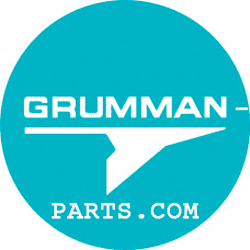The Torque Tube Inspection is a critical and often overlooked part of your Grumman airplanes annual. A failure is never an option with this landing gear component.
There are three types of torque tubes used on our airplanes.
All torque tubes are the same part, and fit all AA1 series, AA5 series, and the AG5B.
If both sides fail, the nose strut collapses. The propeller hits the ground with damage to the propeller, nose strut, wheel fairing, lower cowling, and possibly the firewall. An engine prop strike inspection will also be required. This is a very bad way to end your day and probably your airplane.
In the
The first STC went to Frank Johnston (revised 12/15/1989). Franks design uses a Tapered Pin that is inserted into a precision-milled single hole to maximize the bonding area inside the collars. It prevents a total failure by transferring the stress to the pin should the bonding fail.
In the video, Roscoe mentions that FletchAir will not take these for remanufacture. (WE WILL Take THESE CORES)
The second STC was granted to Ken Blackman of Air Mods NW on 2/28/1989. This modified torque tube uses two close tolerance bolts through each bond joint.
This design is the one shown in the videos below and is used by FletchAir in their rebuilding process.
Videos are provided compliments of the Grumman Pilots Association.
Roscoe explains the types of Torque Tubes you may find located deep in the cockpit in front of your rudder pedals.
Video shows the radial stress fractures that were found on both sides of a torque tube of an AA5B Tiger. Cracks originate between the two bolt holes and continue out into the tube center sections.

Thank you for posting this. Keep up the good work.
I have a “case” with my nose torque tube, and therefore been watching those two videos with interest.
If I understand it right, the first one have a STC for “repair” and the other one shows a damage despite two bolts in either side. What to do? Bye a new one ?
Hi Tony,
There were 2 STCs to allow the tubes to be remanufactured. One used a single bolt. The STC holder died in January and they are no longer made. The 2 bolt design is made in Texas but they will not ship outside the USA because they can not issue an 8130-3 Form that would be required. Your option is to determine for certain it is the tube. Yos said in your message that there are no cracks or broken bond joints. Are the engine mounts letting the engine hang lower? Is the prop the standard size the plane came with or does it have an STC for a larger prop? Is the nose tire the correct size and the correct pressure?
Jeff